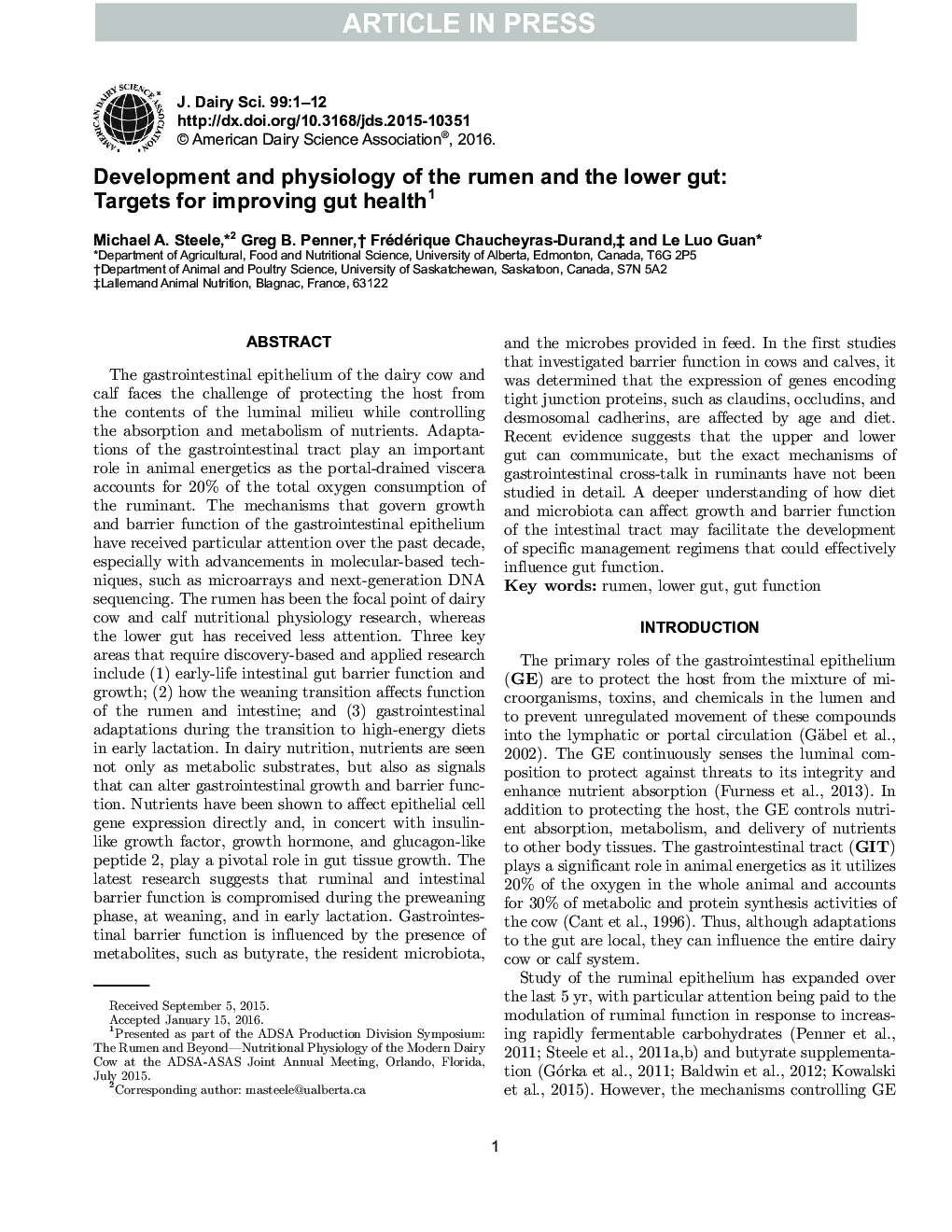| کد مقاله | کد نشریه | سال انتشار | مقاله انگلیسی | نسخه تمام متن |
|---|---|---|---|---|
| 10973359 | 1108013 | 2016 | 12 صفحه PDF | دانلود رایگان |
عنوان انگلیسی مقاله ISI
Development and physiology of the rumen and the lower gut: Targets for improving gut health1
ترجمه فارسی عنوان
توسعه و فیزیولوژی شکم و شکم: هدف برای بهبود سلامت روده 1
دانلود مقاله + سفارش ترجمه
دانلود مقاله ISI انگلیسی
رایگان برای ایرانیان
کلمات کلیدی
شکمبه، خوب پایین عملکرد خوب،
موضوعات مرتبط
علوم زیستی و بیوفناوری
علوم کشاورزی و بیولوژیک
علوم دامی و جانورشناسی
چکیده انگلیسی
The gastrointestinal epithelium of the dairy cow and calf faces the challenge of protecting the host from the contents of the luminal milieu while controlling the absorption and metabolism of nutrients. Adaptations of the gastrointestinal tract play an important role in animal energetics as the portal-drained viscera accounts for 20% of the total oxygen consumption of the ruminant. The mechanisms that govern growth and barrier function of the gastrointestinal epithelium have received particular attention over the past decade, especially with advancements in molecular-based techniques, such as microarrays and next-generation DNA sequencing. The rumen has been the focal point of dairy cow and calf nutritional physiology research, whereas the lower gut has received less attention. Three key areas that require discovery-based and applied research include (1) early-life intestinal gut barrier function and growth; (2) how the weaning transition affects function of the rumen and intestine; and (3) gastrointestinal adaptations during the transition to high-energy diets in early lactation. In dairy nutrition, nutrients are seen not only as metabolic substrates, but also as signals that can alter gastrointestinal growth and barrier function. Nutrients have been shown to affect epithelial cell gene expression directly and, in concert with insulin-like growth factor, growth hormone, and glucagon-like peptide 2, play a pivotal role in gut tissue growth. The latest research suggests that ruminal and intestinal barrier function is compromised during the preweaning phase, at weaning, and in early lactation. Gastrointestinal barrier function is influenced by the presence of metabolites, such as butyrate, the resident microbiota, and the microbes provided in feed. In the first studies that investigated barrier function in cows and calves, it was determined that the expression of genes encoding tight junction proteins, such as claudins, occludins, and desmosomal cadherins, are affected by age and diet. Recent evidence suggests that the upper and lower gut can communicate, but the exact mechanisms of gastrointestinal cross-talk in ruminants have not been studied in detail. A deeper understanding of how diet and microbiota can affect growth and barrier function of the intestinal tract may facilitate the development of specific management regimens that could effectively influence gut function.
ناشر
Database: Elsevier - ScienceDirect (ساینس دایرکت)
Journal: Journal of Dairy Science - Volume 99, Issue 6, June 2016, Pages 4955-4966
Journal: Journal of Dairy Science - Volume 99, Issue 6, June 2016, Pages 4955-4966
نویسندگان
Michael A. Steele, Greg B. Penner, Frédérique Chaucheyras-Durand, Le Luo Guan,
